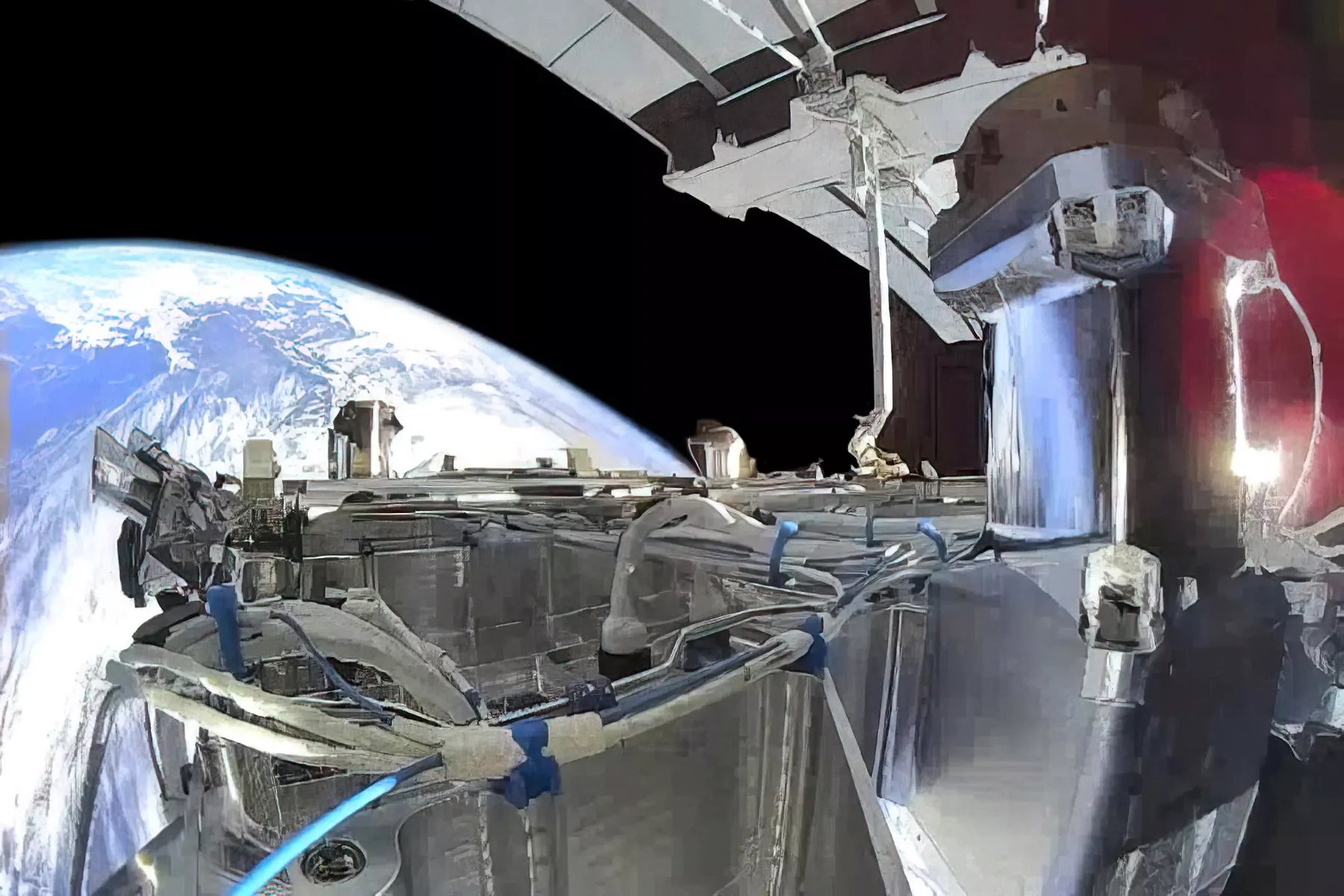by Christophe Bosquillon
PART 2: BURNING QUESTIONS

On 12 March 2024, the Prague Security Studies Institute hosted a public online guest lecture with Dr. John Klein, Senior Fellow and Strategist at the Falcon Research, Inc. on the topic of “Space and Irregular Warfare,” whose recording is available here. Dr. Klein also instructs space policy and strategy courses at George Washington University’s Space Policy Institute, Georgetown University’s Strategic Studies Program, and Institute of World Politics at the undergraduate, graduate, and doctorate levels respectively. PSSI Project Manager for Space Security Kristína Sikoraiová hosted the lecture and moderated the ensuing Q&A session. In Part 1, we covered the key concepts that underwrite the theory and practice of irregular warfare in space. In Part 2, we will review some burning questions covered in the lecture Q&A and how Dr. Klein comprehensively answered them, going the extra mile to provide advice for practical implementation.
Burning questions
Dr. Klein provided straightforward answers to the audience’s questions, all the while managing the complexity. Yes, one should expect GPS and GNSS jamming in any conflict, but you can survive in a degraded environment. The real problem is that a hybrid architecture with the intermingling of government and corporate capabilities makes it harder to differentiate between legitimate military targets and non-military objectives, under the law of armed conflict but also humanitarian law as you try to minimize human suffering.
And yes, we need to improve coordination between the US and its allies and all solution providers. When it comes to connectedness, cyber warfare, and space warfare are one and the same and go back and forth. A cyber conflict may turn into a space warfare conflict, and vice & versa. In the cyber community you can’t just sit back and you need to take measures to respond in real time. The space community needs to take a similar approach, by applying lessons learned terrestrially.
However, the blurred distinction between civilian and military capabilities remains unresolved. Even if SpaceX has defined Starshield as the defence element under the Department of Defence contract, and keeps Starlink as the commercial element, that wouldn’t present an adversary from targeting Starlink assets when they become an instrumental party to a conflict. Furthermore, Russia is adept at practicing lawfare and the intentional distortion of legal regimes or what we consider norms. Considering Starlink as a legitimate target would be a politically consequential decision, then it depends on whether it’s an entire constellation that is taken down, or only a limited number of assets. The order of consequences goes from negligible to catastrophic, eliciting different levels of response.
A fighting force from space, in space, and for space
Upon the PSSI moderator selecting our question “How to format the Space Forces so that it becomes both a regular and irregular warfare fighting force from space, in space, and for space?” Dr Klein stated that “this is the main question.” Before examining Dr. Klein’s answer, let’s review some of the premises of this question.
It isn’t too late to foster international cooperation between allies.
Even though that is an essential responsibility in its role, the US Space Force shouldn’t merely act as a support desk to its terrestrial sister services, securing communications for the Army, Navy, Air Force, and the Marine Corps. The Space Force has a role to play in orbit, to serve and protect space assets there as a warfighting force. Furthermore, if you take a few steps back and contemplate cis-lunar space, cis-martian space, and beyond these, the full Solar System, you see a “strategic ocean” where the interests of competing nations are at stake, through the actions of their government and private sector alike. People may disagree on how “multipolar” our current terrestrial order has become, but at least we should all acknowledge the fact the Solar System is fair game for the ambitions of at least 2 “peer powers,” the US and China. You’d expect the Space Force to also prepare itself right now to play a role in the larger Solar System picture to balance the clearly competing ambitions of China.
But even if the Space Force focuses its current priorities on orbit only, there is a lot that could go wrong during a terrestrial conflict involving the 2 peer powers and their respective allies and partners, as already seen over Ukraine and anticipated for Taiwan and other disputed areas. Besides surface-to-orbit and orbit-to-orbit conventional kinetic actions, laser-blinding, spacecraft capturing, jamming, all sorts of irregular warfare tactics will take place, including cyber-attacks. Whether it’s deterrence by denial of capabilities or denial of benefits, the Space Force will still need to be prepared to fight, to remain credible as a deterrent force. Again, deterrence (the ability to modify the adversary calculus) is not resilience (the ability to take many hits and survive a protracted conflict) even if it relates to it.
Finally, at least in a classic government-driven model of a department or ministry of defence, there is only so much the commercial sector can and should be permitted to do. Defence is a primary mandate of the sovereign state vis-à-vis its constituency, the population. In the domains of terrestrial conflict, the “aero” part of the defence and aero-spatial industry plays the critical role of hardware and software provider. It supplies the parties to a conflict but doesn’t run the conflict itself. The frontiers are considerably more blurred with the “spatial” part: what if the provider not only supplies hardware and entire systems, but runs these systems as a legally autonomous entity: from refuelling to servicing to managing space-based communications on a battlefield, to potentially more defensive or coercive actions vis-à-vis third parties, where does one draw a line between the commercial entity and the Space Force? And how to build a Space Force that can deal with all these intermingling factors?
In his answer, Dr. Klein hits the nail head-on: “it all starts with training and education, and what is a fighting force doctrine being explained. The US has a short memory, we learn lessons, then we forget these lessons. Right now, we just re-learned a lot of our irregular warfare strategies, during Iraq and Afghanistan. These lessons are difficult, especially back in an era of great power competition. We’re fine with competition, but we must define the threshold of our conflicts, which is part of a warfare framework.”
Then, Dr. Klein further elaborates on the role of commercial entities: “Forget for a moment the regular warfare element. Proxies and proxy wars are going to be essential elements. One can talk of a war between commercial companies in a legal sense and a legal sense. The idea of force for hire is an idea that goes back millennium. In ancient times, if you didn’t have a military fighting force, but if you had the treasure and economic means to procure the fighting force, you’d call it the M word, which is the mercenaries”.
Private Military Companies in Space
Dr. Klein further elaborates: “The euphemism in the West for mercenaries is Private Military Companies (PMCs). That is a big business that isn’t talked about much. But services that PMCs provide are training and education, logistical support, and active security. Logistical support in the space domain includes refuelling in orbit and servicing. So, we’re starting to see the potential for PMCs and entities that will provide security forces in the space domain. If there is a need, it will be filled. Let’s figure out what that means in the West and for Western approaches and our discussions between Allies. Let’s also pick up the old books, and let’s understand what competition and conflict meant through the ages, and how space answers to that.”
The Space Force has a role to play in orbit, to serve and protect space assets.
You are part of the kill chain
This isn’t anymore an academic debate if and when, as a commercial space entity, you are part of the kill chain. Responding to other questions, Dr. Klein further tackled the issue of implications of non-state actors in space. The conversation emphasized the need for policy discussions regarding the status of commercial space assets during conflicts. The commercial sector is also directly involved as a party to the intertwining of cyber and space domains, which requires real-time understanding and responding to interconnected threats. It is a joint responsibility of government (Department of Defence and the Space Force) and the private sector to address the potential targeting of commercial space infrastructures and the complex considerations involved in response strategies. Furthermore, discussing the challenges and strategies for imposing deterrence based on denial of benefits must also address the evolving landscape of counter-warfare: this is particularly sensitive in the context of non-state actors gaining access to space, including terrorist organizations, commercial entities acting on their own, and any actor gone rogue, hell-bent on destruction, and undeterrable.
Strategic and policy implications
Initially, we all went into the PSSI webinar driven by burning questions that were comprehensively and genuinely answered. We should be grateful to Dr Klein for going the extra mile, leaving us with a deep sense of not only the growing importance of irregular warfare in space, but also the need for comprehensive strategies to address emerging threats. Dr. Klein is right to insist that this shouldn’t be an academic debate, but an avenue to contribute with practical answers and implementable solutions to the myriad of issues and problems identified, moving forward. Practical guidance starts with investing in education, training, and developing consistent doctrines for both the Space Force and the commercial sector. It isn’t too late to foster international cooperation between allies while maintaining some form of diplomatic dialogue with adversaries. And to develop adaptable defence measures in space, that combine both regular and irregular warfare, future practices may see increased integration of military and commercial capabilities in space operations. That will necessitate a complex balancing act between policy, the law of armed conflict as it intersects with space law, humanitarian law, and also a clearly articulated consideration of ethical implications.
A call for responsible behaviour
When, as a dominant space company, you become party to a conflict, you cannot anymore entertain the motto that it’s cool to break things, because it’s not: when you become de facto part of the kill chain, the enemy will not ask for permission to destroy your assets all the way down to the terrestrial headquarters of your favourite commercial space companies. The strategic implications are obvious as this kind of escalation would elicit a hard response with a potential nuclear deterrent component on Earth, if not in space itself.
Overall, with the rise of non-state actors in space, there’s a need for proactive planning and collaboration to mitigate potential risks and safeguard space assets. Space policies and strategies should evolve to address the blurred lines between civilian and military domains, emphasizing both resilience and deterrence. Overall, one needs to address responsible behavior among space actors including the commercial space sector, before conflict reaches the threshold of destroying the space domain, starting with orbits. The PSSI webinar has further highlighted the complexities of space warfare and the importance of proactive measures to ensure the security and sustainability of space operations in an era of increasing competition and conflict. We definitely concur with Dr. Klein that “we should have these hard discussions now, rather than pretend these problems don’t exist”.

Christophe Bosquillon has a diverse professional background, having operated globally with a focus on the Indo-Pacific region. His experiences in Japan, the Koreas, Taiwan, China, ASEAN, India, Russia, and Australia have given him a deep understanding of the multipolar realpolitik of our world under the Pax Americana. With a background in engineering, trade, and foreign direct investment in industries relevant to Space Resource Utilization (SRU), such as mining, transportation, energy, manufacturing, agrifood, environment, and digitalization, Chris is committed to developing SRU value chains that benefit the Earth. As an executive, owner, writer, and founder of Autonomous Space Futures Ltd, Chris has extensive experience in collaborative policy crafting and works to develop space business and governance models relevant to society. He is a member of NGOs that provide input to the United Nations Committee on the Peaceful Uses of Outer Space (UNCOPUOS) legal subcommittee Working Group on Space Resources. Chris contributes to regulatory clarity on appropriation, priority, sustainability, and sharing in a way that balances national interests with civil society inclusion, provided a transparent due process is followed. When advocating for access to technology and space for the Global South, Chris believes that emerging space powers’ participation in space markets must be commensurate with their interest and involvement in international space politics. He believes that their ability to develop sovereign domestic capabilities with spillover potential is also essential. Chris is keen on ‘Peace Through Strength’ diplomacy and deterrence-based security as enablers of secure space access. He supports sovereign cislunar space situational awareness as mandatory for freedom of circulation in the space domain and deconflicted cooperation on the Moon.
 SpaceWatch.Global An independent perspective on space
SpaceWatch.Global An independent perspective on space




